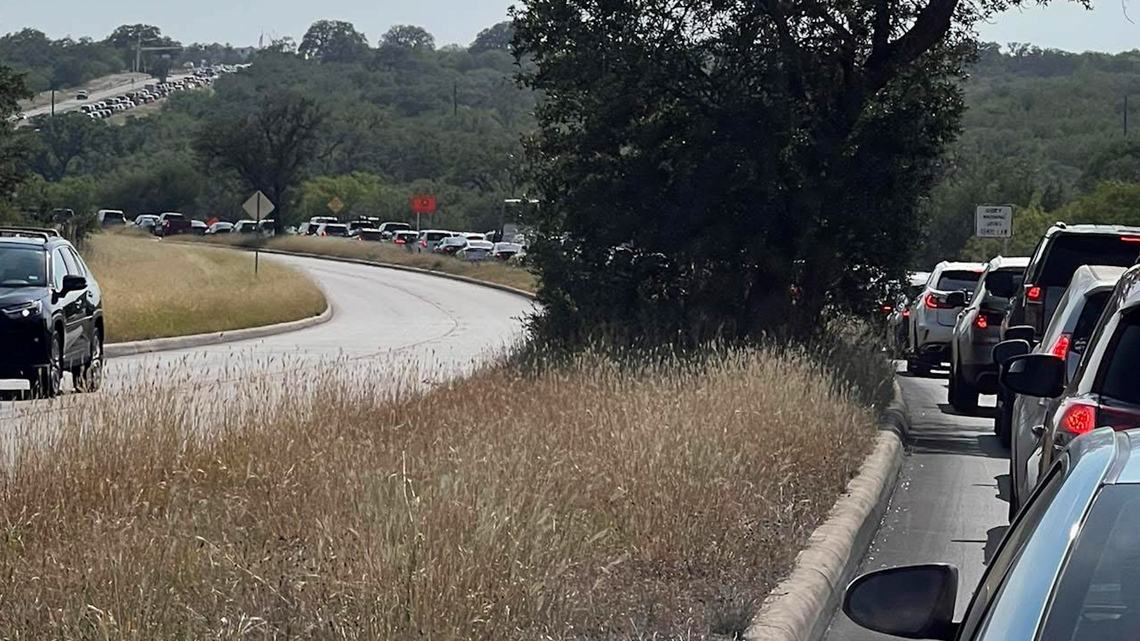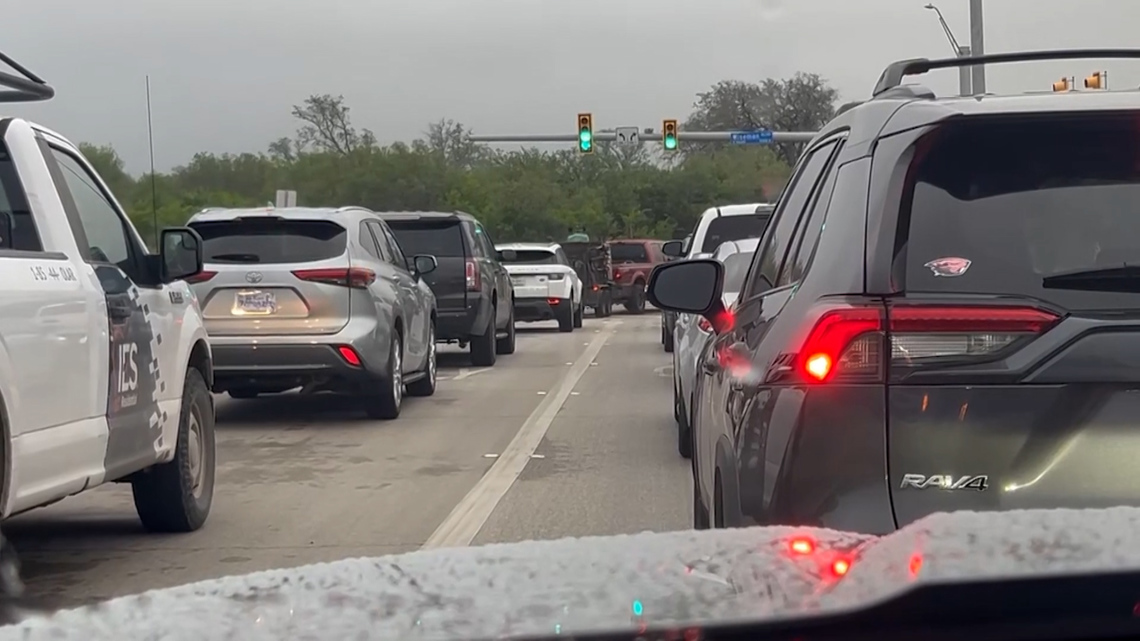Residents on San Antonio’s far west side face daily gridlock, stretching a 3-mile commute to nearly an hour, raising serious safety concerns.
BEXAR COUNTY, Texas — What should be a short drive is turning into a daily nightmare for residents on San Antonio’s far west side, where a three-mile commute can stretch to nearly an hour.
The worsening gridlock along Wiseman Boulevard is not only disrupting daily life but also posing serious safety concerns. Emergency vehicles are reportedly being forced into oncoming traffic just to respond to calls.
Residents say they’re at a breaking point.
“This needs to be addressed before someone gets hurt,” one neighbor told KENS 5.
Residents say they’ve had enough. The traffic congestion, they argue, is no longer just a nuisance—it’s an urgent crisis, and the upgrades installed so far aren’t cutting it.
“Wiseman is now just as horrible or worse as Culebra and Potranco,” said Staci Posos, a resident of the area since 2020. “3.1 miles takes me just over 45 minutes just to get to [my daughter’s] daycare.”
The rapid pace of new development in the area is outstripping the capacity of local infrastructure, neighbors say.
“There’s another housing complex, then they built more homes on Talley,” said Michael Coats, an Alamo Ranch resident since 2021.
“These roads are built for what traffic was 10 years ago, 15 years ago,” added Candi Aguillon, who moved to the neighborhood in 2005. “They’re so behind in the infrastructure of the roads to match what they knew what was coming.”


Residents are adjusting their routines—leaving home an hour early, if they can even exit their neighborhood at all.
“Sometimes we just can’t leave our house because we’re so frustrated,” Coats said.
Candi Aguillon, who once served as a volunteer firefighter in the area, recalls a very different Wiseman Boulevard.
“When I moved here, we used those same intersections to pick up firewood for our BBQ fundraisers,” Aguillon said.
Now, she says, the area is unrecognizable. Neighborhood streets have become unofficial detours.
“My husband’s been going through cancer treatments five days a week. He can get from the Med Center to Wiseman fairly quickly,” said Aguillon. “Then he’s gotta sit from the top of Wiseman to turn into the neighborhood for 45 minutes. He’s less than a mile and a half from home.”
Safety is also a growing concern. According to Coats, emergency vehicles are being forced to drive into opposing traffic lanes to get through.
“God forbid an accident happens to add to that—you’re going nowhere fast,” Aguillon added. “It’s life-altering, to be honest. You’ve gotta get to work, you’ve gotta get your children to day care or school and you can’t not do these things.”
Key problem areas include the intersections of Wiseman Boulevard at Alamo Parkway and Cottonwood Way.
“Both lanes are right only. Nobody follows those rules,” Posos said, referring to the turn lanes on Alamo Parkway to Wiseman.
“It’s only supposed to be one turning right, then they both use the lane to turn right,” added Coats. “It’s backed up for miles all the way until the neighborhood.”


New lane configurations and traffic lights at Cottonwood haven’t eased the situation, residents say. They’re now calling for broader changes—extending back roads, reconfiguring intersections, and better signal timing.
“Managing the infrastructure should be a bigger priority than funding the Spurs Marvel project,” Aguillon said. “The Spurs are great, but this is every day lives, these are people who are voting for you.”
Officials with Bexar County Public Works acknowledged the issue in a statement to KENS 5:
“We are aware of congestion that occurs along Wiseman Blvd, and in general, the Alamo Ranch area, which has been one of the fastest-growing parts of the county for the last several years. We recently evaluated the entire Wiseman Blvd corridor from Loop 1604 to Talley Rd to identify short- and long-term solutions to improve congestion and safety along the corridor.”
According to the county, recent signal timing adjustments were made—except at Cottonwood Way, where ongoing private construction has delayed changes. The intersection is considered the primary choke point, and improvements, including additional turn lanes, are expected to be completed by mid-June.
“We will re-evaluate signal timing along the corridor after traffic adjusts to the new intersection configuration,” the county stated.
Until then, residents continue to wait—and hope—for a permanent solution to a problem that has taken over their daily lives.
“People are fed up,” Aguillon said. “They’re fed up with people trying to break the traffic laws just to get ahead. We all have somewhere to be. It’s like a pot that’s about to boil over.”
